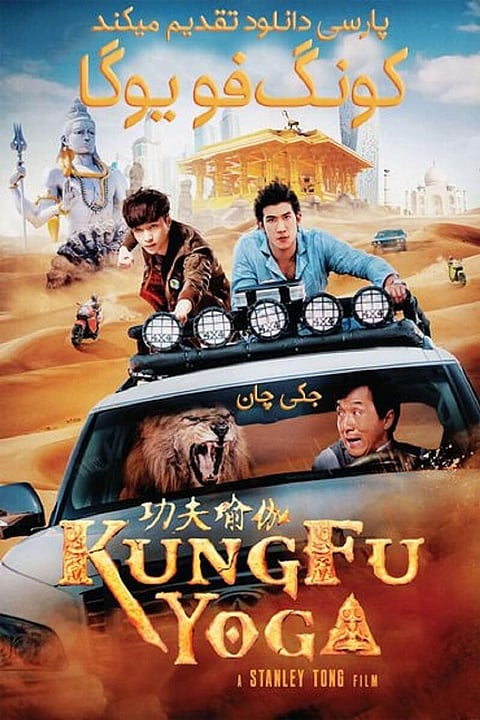Kung Fu Yoga: A Movie depicting Indo-Chinese Friendship!
- Kung Fu Yoga is an Indian-Chinese movie which released in 2017 and was a box office hit
- The movie exhibits indo-china cultural ties and has an underlying political message
June 14, 2017:
Kung Fu-Yoga is a Chinese-Indian movie directed by Stanley Tong which released in 2017. The movie, besides being a record breaker on box office and entertainment package, encompasses in itself some really important moral lessons. Kung Fu Yoga quite aptly shows the beautiful cultural ties between India and China.
The plot of the film is based on treasure hunting. Hero of the movie, Jack ( the character played by Jackie Chan) is an archaeologist who teams up with Ashmita (who introduces herself to be an Indian researcher but later it is found that she is an Indian princess) to read an ancient treasure map.
On the other hand, The team made up of Jack's assistants, Xiaoguang and Nuomin, treasure hunter Jones, as well as Ashmita's sister Kyra, finds a Himalayan cave in which a royal army of the Magadha kingdom got trapped by an avalanche hundreds of years ago. While facing the Randall, Jones- a rebel leader and descendant, steals a diamond and tries to sell it at an auction in Dubai. This sets a long chain of incidents as the Chinese-Indian team moves to the Indian state of Rajasthan to get the diamond back and search for the treasure.
Gradually, they come to understand that the treasure is not only gold but it is the ancient wisdom, which, as stressed by Jack and Ashmita, might make the lives of common people better. The respect that characters of both the nations show towards each other's rituals and traditions is beautiful to watch. Here are some instances from the movie that show the diplomatic "romance" going on between both the nations:
- When the Indian-Chinese team reaches the secret temple of Shiva in the Himalayas and find a golden statue of Shiva, not only Indians but the Chinese characters pay respect to each other with pressed hands.
- Comparison of the practice of upvasa (Hindu religious fast) to Chinese fasting habits by Jack clearly shows the similarity between the cultures of the neighboring nations.
- Kung Fu, which is an ancient Chinese art (having roots in India) and Yoga (which is an ancient Indian practice) are not only in the name of the movie but their importance is quite aptly exhibited in the movie. The hero exhibits his Kung Fu-based fighting skills to face the villains, yoga is shown as essential to holding one's breath and therefore swimming through ice-cold water.
- Protagonists of both the nations are known to each other's cultures and exhibit so in their behavior. The Indian heroine Kyra replies with "Ni hao" to the "Namaste" of the Chinese hero.
- Both India and China have been depicted to be great ancient civilizations by focusing on great kingdoms of both the nations (India's Magadha Kingdom and Chinese Tang Dynasty).
However, being more of a Chinese production, at some points China is shown to be superior to India and such a field is technology. When the Chinese protagonist comes to India, the scenes include a snake-charmer, a levitating holy man and the act of the Great Indian Rope Trick, exhibiting India as more of a "not so technological country". The Indians are also fascinated with the fish-drone that the Chinese team possesses and when the latter begins ice drilling with a powerful machine, the Chinese hero says "Technology rules" while the Indian heroine exclaims "That's unbelievable!"
The movie also takes into account the recent "One belt One Road" initiative. When the Indian protagonist first meets the Chinese team and offers them cooperation, the not-so-subtle sentence we hear on screen is: "This would also be in line with One Belt, One Road." Hence, it is clear that the movie doesn't only propound Indo-Chinese friendship but also has an underlying political message.
– prepared by Nikita Tayal of NewsGram. Twitter: @NikitaTayal6


